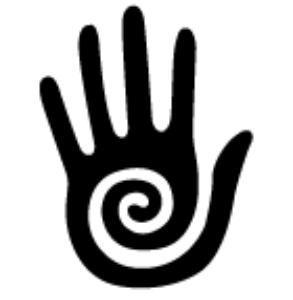TT Journal, ISSUE 6, September 2023
By Andreas Weber
Above the bay, whose waters had receded far out, the sky was a platinum gray. The light was metallic, the air mild and humid, saturated with the sweet iodine of the sea. A whole afternoon on the shore lay before us. Time was stretched out at our feet, just as the ocean was lost before our eyes. Here and there, the mudflats dotted with gray stones had taken on different shades of gray, brown, and green, depending on texture and water content.
The day before, I had spent hours with my four-year-old son in Royan’s wholesale fish market admiring the displays of black, blue, and red sea creatures shining with moisture. We had touched table-sized halibut and tried to grab some of the flailing Ètrilles, green-black edible crabs, from the throng of other shellfish in the sea-scented hard foam boxes.
I sat on a dried boulder, squinting into the light, watching Max who had expanded a tide pool with rocks and algae into a reservoir. Now he was collecting withering crab shells to float in this display aquarium. Max’s face showed the expression of supreme concentration as he combed through seaweed patches and turned over small boulders. He hoped to catch a live crab that would crown the collection.
In his movements scanning the mudflats, Max was completely present. At the same time, he seemed far removed from the real world. He existed in a cosmos by his grace alone, contained within himself. I was only present as background to his activity, which became clear to me when I met his gaze briefly touching mine and then slipping away again to the seabed.
Max was playing. He had started playing as soon as we stepped on the beach. While I was looking into the distance, assuming an idle, aesthetic perspective from the outside, my son had begun to do something. He was encountering up close what I was looking at remotely. His perception seemed to emerge from this playing. What he did not use as part of his play with the water and the crabs did not exist. In vain I could have wandered with him from stone to stone to show him the details of the creatures hidden there. He got to know them only by using them.
One day last summer Max had found a dead lizard. He kept it for a few days and treated it like a pet. A real lizard! In the intensity with which it occupied him, it was not dead, but alive. Max carried the floppy-bodied reptile with him everywhere. He built it a little house out of sticks. He laid it on a warm stone to sunbathe. At one point he casually said to me, “Dad, I got a maggot out of the lizard’s mouth. She’s better now.”
Only play made the world real for my son. Playing was simply his way of life. Play was the channel of perception through which the world entered him. Behavioural scientists know that until the age of about seven children communicate with each other primarily through play and as play – less so through verbal statements. Children don’t sit across from each other and chat with each other, but start doing something and immerse themselves in it jointly.
Individuals who play together inevitably understand each other. To be absorbed in joint play is virtually the acme of successful mutual comprehension. For the child, the world reveals itself in play. Because it discloses itself as fascination, as enchantment and deep absorption of the one playing with it, this world is always beautiful. In the loving gaze of the little ones, reality is a miracle.
It is this lesson that I have learned anew from my own children. I do not want to forget it again for anything in the world.
I don’t know how long we stayed there on the Atlantic shore, sheltered by the gracious patience of the sea. We just kept going until the water rose again. We ate a snack in between from the picnic bag we had brought with us. Then we watched, half sadly, half in joyful anticipation the shallow waves wash over the walls of Max’s crab tank and release its occupants, living and dead, into the wide spaces of the sea.
I grit my teeth when Max insisted on taking a handful of the most beautiful corpses as souvenirs. I took it upon myself to throw them into the bushes without much fuss when Max forgot about them, similar to what I had done before with other perishable finds.
The expanse of sea dissolved into whitish indistinctness. A hint of red crept over it, lending a residual warmth to the incipient evening. “How is it, Dad, that the world is so beautiful?” asked Max when we had turned our backs on the beach and were walking to the car.
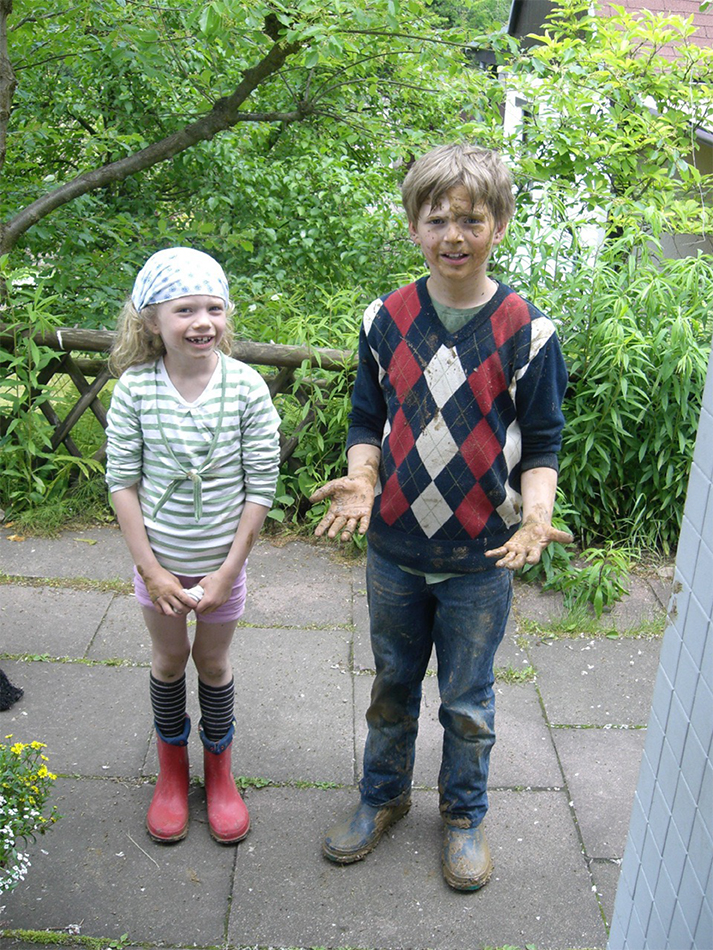
Who lives, plays
Why do children play? Why do adults also play, as do all humans? Children do not treat nature like little scientists, nor like aesthetic flâneurs. They playwith it. Therefore, the question about the central role of play in our reality must not remain unanswered. It leads us to another, even more profound question, namely why humans need the presence of other life. Playing and being alive are closely related. Perhaps the experience of the aliveness of other beings is something quite similar to the experience of one’s own aliveness in play.
Many philosophers understand the peculiarities of human culture that distinguish us from other animals – such as art, singing, stage drama, ritual ceremonies, competition in science and sport – according to their character as games, as playful enactments. Without the concept of play, the idea of human culture might be inconceivable. Nevertheless, of all the definitions with which humans have ever tried to distinguish themselves from the rest of the animal kingdom, the description of homo as the animal ludens, the “playing animal,” creates the least distance between us and other living beings.
For animals also play. And this is not just exclusively the enthusiastic play of puppy dogs. Adult animals play with each other in jest, romp around with objects or, like fighting deer and sticklebacks, enact the complex rituals of their love games. Mice and rats are known to indulge in joshing. Even ants, behaviourists have observed, scuffle with each other and indulge in activities that can only be understood as playful exuberance.
Play is an obsession shared among all creatures, animals and humans alike. And everywhere its appearance puzzles researchers. Why is the urge to play so great that even in concentration camps, on the threshold of death and gloom, children sat in the dust and began their imaginary journey with found objects in their hands? Why did researchers in the rainforest observe chimpanzees sitting almost dreamily by a puddle of water, letting the liquid run over their fingers again and again like human toddlers would do in the playground? Why do young leopards become so hypnotized by the rustling of a dry branch that they leave their mother’s safe perimeter and put themselves in serious danger? Why, in brief, is play ubiquitous, although it does not always seem to contribute to biological advantages?
It is the economic questionability of play that makes researchers wonder again and again. Apparently, animals play even though they waste energy unnecessarily and reduce their chances of competing with other individuals and species. Why do we all afford ourselves such a luxury, when nature, surely, is all about surviving, saving up as many resources as possible and reproducing more offspring than everyone else?
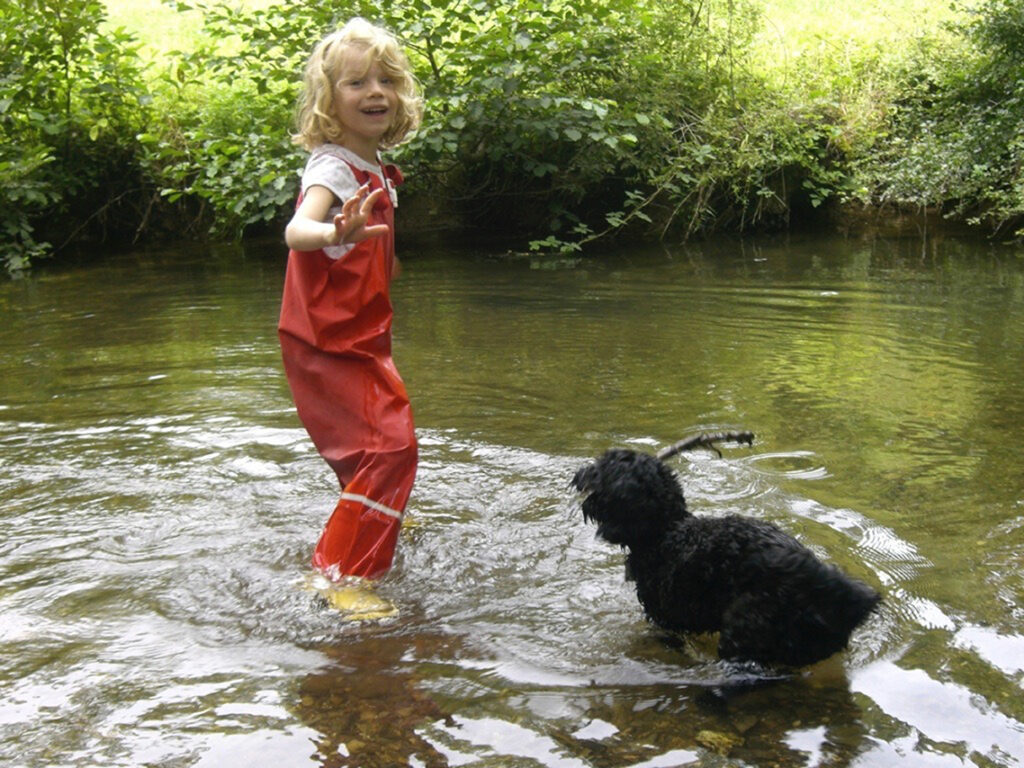
Play is the breath of the soul
One thing is certain: Play is indispensable for a child’s development. A child who is prevented from playing becomes ill – no different than if it were raised without human attachments. Play is the third existential need of life, next to the physiological needs of breathing, drinking, eating and sleeping, and next to the need for emotional relationships with caregivers and partners. But even these observations do not explain another fundamental feature of play: the enthusiasm connected with it. Play is necessary, but it is also beautiful. Like love.
Eighty years ago, the Dutch cultural scientist and play researcher Johan Huizinga already recognized this discrepancy. For what reason, he wondered, is so much pleasure necessary for all the mechanics of life’s mastery? He was to formulate the central, if obviously neglected, puzzle of play behavior research, (ludology), namely: “Why does the baby coo with pleasure?”[1] Something in play seems to transcend all usefulness. And apparently that is what playful humans, playful animals, all exuberantly frolicking beings deeply absorbed in what they are doing are seeking: A sense of a full life beyond efficiency. Or, in other words, the experience of being themselves in freedom.
Play is always of one’s own free will. As soon as compulsion appears in it, it becomes serious for at least one of the participants, and it is not play anymore. Therefore, playing cannot be instrumentalized. It cannot be exploited as a vehicle for something useful. Even the slightest trace of a pedagogical aim kills the spontaneity in it. But spontaneity means freedom. Play is free of constraint because it takes place outside the concerns of the everyday. It happens in a space separated from ordinary reality and its hardships. Its laws come from the imagination, not from physics, and out of their own logic create an enclave of blissful autonomy – in an arena within the framework of the rules of fancy, in the castle of the imagination, which is able to create heroes out of sticks and fortresses out of stones.
Creative growth always happens in play. But this growth is limited to a sphere of the not-real, of the potential, of pure creation. Potential worlds are played through, hypotheses are set into dynamics. And it is precisely the absoluteness with which it is possible to be a creator here that makes one happy. “Play is the jubilation of the possible,” said the philosopher Martin Buber.
Playing children are alchemists of being. By removing the field of play from the terrors and constraints of reality, the playing child succeeds in substituting itself for the creative forces of the world. It is creative, just as the world is creative. In the space of play that it has imagined, it does not suffer for a limited duration from the hardships that afflict all living beings. The child reclaims the space in which the possible becomes real even under the threat of death. She saves herself – for a given time – by transforming herself playfully into the world that experiences itself. The child loses her limited and actual self in play. She exchanges this for the basic principles of creative becoming.
From this point of view, playing cannot be in the service of a purpose. Rather, it becomes the highest reality itself. Playing is therefore neither a facsimile of the struggle for survival nor its clumsy preparation. If it is a facsimile, then it is a facsimile of vitality, a creative symbol of the creative impulses that give rise to our world. All concrete forms and contents of play follow these impulses. Play reflects reality, but not by imitating it or by practising it, but by producing the qualities that characterize the deepest layers of the world, namely creativity, purposefulness and unbridled joy. The meaning of play consists in becoming aware of the truth to which a living being was born. This becoming aware happens in the way that the child constantly creates their world and through this action perceives and understands what the world is about.
In the protected space of play, it is possible to suspend the precariousness of every individual existence. In the limited domain of play the mortality of the player is temporarily suspended. “It’s just a game” means: I can’t die from it, just as I can’t perish from a dream. Not being able to die, however, is traditionally an attribute of God, the creator and thus the best player of the world- that is, of the originative power of creation itself. When playing, the child laughs with happiness. Laughter, humor, joking also have this fundamental quality that they make the one who jokes, even in the face of his own death, the master of the playful creativity of the cosmos. Laughter is the play of the spirit. To laugh means: to oppose the reality of what now directly concerns me with the reality of the whole of life. I play with the seriousness of reality by humorously playing with words and their meanings.
Children are given a clearer knowledge of the world in their play than adults who look down on them from the height of life’s seriousness. This does not mean that adults must become like children. But we should understand that our gravitas is not the natural direction play is aiming at, and that it must not be anchored there with pedagogical tricks. The world-creating and world-experiencing power of children’s play finds its continuation rather in poetry. The poetic always remains play. What for a child means to enter into play in an intense way, for an adult signifies seeing the world from the perspective of productive expressiveness. Both types of experience seem completely different from each other, but they stem from the same creative attitude towards reality. Ultimately, the artist who approaches the mystery of reality by juxtaposing this reality with an imagined, that is, a world which is played upon, invents this new world no differently than the child who playfully imagines scenes. Beauty is not determined by the sphere of rationality, but by that of life.
Play can thus be understood neither as a function nor as a symptom. It embodies existence just as directly as all other existential life processes. Play is being alive as embodiment, creatively being alive, and thus the expressed content of being alive.
Like play, a living being is also in a locally and temporally limited state of exception from the laws of matter. An animal is not aligned solely to the laws of biochemical reactions, but determines, within certain limits, the chemistry that constitutes it. And yet, this freedom is due solely to its body, whose needs must be met to enable living autonomy. A living being can only fulfil these constraints by realizing them in freedom. It decides for itself, as an individual, and yet it is merely a piece of earth. But playing means exactly that: it means to experience what is actually necessity as freedom and, vice versa, to make a necessity out of the freely chosen invention. The principle of play is the principle of life. Play is the way of the living to fulfil its needs in freedom. And that means: biological life realized in fullness is life as play.
What is expressed in play is a symbol of the living dynamic. Children need to play because they are alive. They need liveliness because they want to play. They play because their inner experience of living dynamics is play. Basically, therefore, it makes no more sense to speak of the usefulness of play than it does to speak of the usefulness of breath or of growth. Life is breathing and growing as much as it is playing.
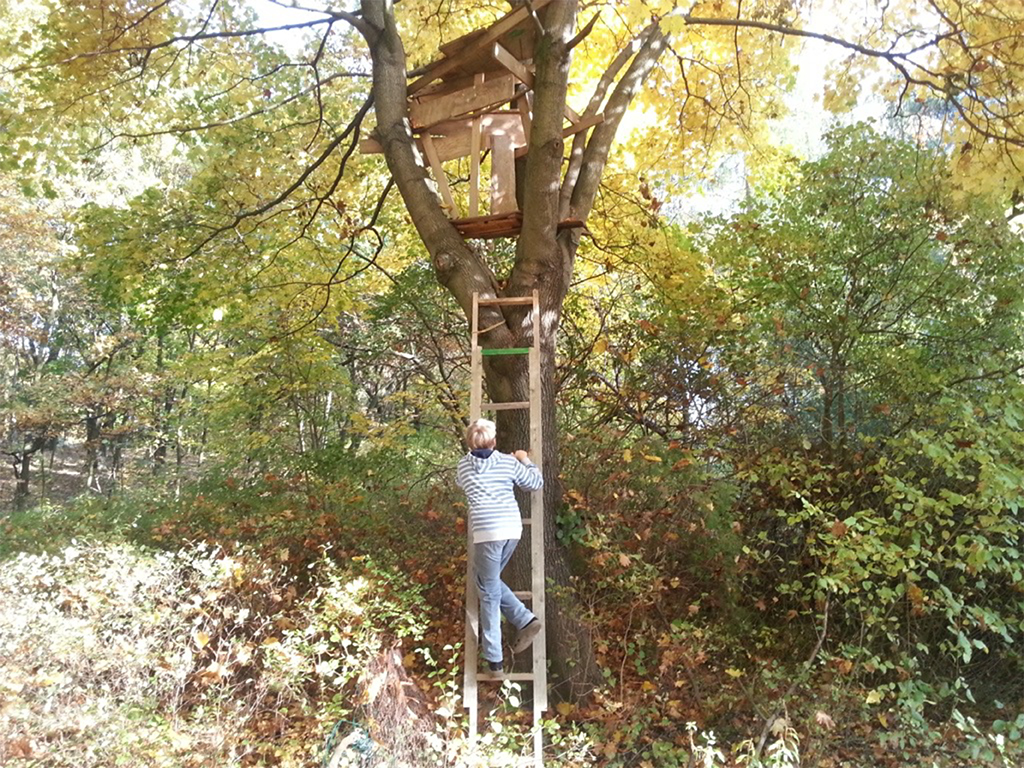
In the childhood of the world
I visited the extensive Paul Klee exhibition in Berlin twice with my children in the spring of 2009. They were happy to come along. They were happy not to have to linger in front of realistically painted oil paintings with scenes from sunken worlds. They could immediately understand the art they saw as play. Emma, who was six years old at the time, stood in front of Klee’s picture “Lamb” for a particularly long time. The small oil drawing hung rather unspectacularly on a square support column in the basement of the New National Gallery. The painting shows the animal in outline, half dissolved into the cubic elements of a background composed of many pastel tones. The lamb’s muzzle is round and soft, its ear flexible, its body gently curved. A red cross is emblazoned on the head, a blood-red tear drips from the eye.
Emma did not understand the allusions to the Easter lamb. She did not understand anything, but only looked. And with this look she took the lamb, this small crumpled beautifully colored vulnerable creature with pride and melancholy into her heart from the first moment. At home she drew it again and again. She cut it out of the educational Klee coloring book that I had purchased at the museum and glued it to a fresh sheet of paper, making a new lamb picture around it with Klee’s motiv in the center.
Since Emma saw Paul Klee’s paintings (among which were his own children’s drawings) in the museum, she has never forgotten that her paintings are always a form of art – especially when they do not succeed in depicting “reality”. As a child, Emma had lost all respect for realistic depiction. She drew as she felt. Although I could not discuss all these things with her, Emma intuitively grasped what Klee himself says about his work: “Art relates to creation in a parable-like manner. It is in each case an example, much as the earthly is a cosmic example.”[2] Emma understood because she was a child. Because the fantasy world of the playing child has as much a part in this creation as the intertwined world of biological systems and the world of artistic ideas.
In the evening, as Emma sat once again in front of her Klee drawings, we talked about the lamb. Why did this animal, so unzoologically depicted, contain so much of the attraction of the little woolly sheep? Perhaps because the picture did not depict alamb at the moment, but something quite different, something much more complex and something much simpler at the same time? I tried to make a face that would express as much “lambness” as possible, pushed my lips forward, looked soft and a little sad and sacrificial. Emma had to laugh and wrinkled her nose to look back as lamb-like as possible. We agreed that it would be most accurate to paint a lamb not with colors, but as warm semolina porridge. Which adult would have understood that? With Bataille, who famously wrote that a tiger represents as a symbol what the sexual act represents as a performative dynamic, we could say: a lamb in the meadow is what warm semolina porridge is in the mouth.
Childlike play forms correspondences not between external figures, but between the inner references of the world. With our body we know: The soft, warm, helpless type of quality can be produced in quite different sensory channels. It is a feather flake in a storm, a sweaty baby’s head in the night, a shy laugh. In play, children are fascinated by a felt reality, not by its physical nature. They insist that we are still at the beginning: In the “childhood of the world,” as the French sociologist Bruno Latour opined.
Play is the most far-reaching manifestation of the constant creative character of our reality. The child makes herself – ignorantly and sensually- the tool of this creatio continua: only by being in its service does she really belong to the world, and only in this way does she become truly human. Play is thus the way in which wilderness breaks through in us.
When a child plays lamb, it is so that she feels herself like a lamb. Paul Klee paints how a lamb feels from the inside. Not how we would feel as a lamb, but how being a lamb – and being a lamb “slaughtered for the world” – would be experienced from the side of a feeling subjectivity. We can understand the image, because as sentient beings we are also always lamb, are victim and at the same time its slaughterer and in addition the child, who feels secure when wrapped in the woolly softness of the fur.
Klee’s contemporary, the painter Franz Marc, attempted something quite similar in his animal paintings. In some, he awakened deer and horses in dramatically stretched gestures to a life that lies outside of any ordinary existence. The picture of the deer should itself be deer as far as possible, Marc said, it should not represent, but “deer”, understood as a verb. The painting should bring forth an identity that can only be expressed in sensual presence, and no longer in ordinary language.
One could also say: only in play. Like the creative power of deeply experienced children’s play, this form of poetry is the realization of a cosmos built according to the principles of aliveness. The poetic gesture is the realization of the whole in an arbitrarily small fragment. In all modesty the small child creates the universe, when she builds a fairy castle, a family kitchen, the artillery command post of a star destroyer with a few sticks, leaves, flowers, seeds and stones. Playing, the child herself is this whole. Acting she becomes aware of herself as a center of the universe. Playing, the child realizes that every being is always at the same time creature and creator, particle and total, potential and reality.
The transcendence, of which children have so much to say when asked about it is therefore not outside, but here within us in every living moment. Children demonstrate that all that matters is to take it into our hands, to mould it. They prove: Everything that cannot be expressed as playful experience remains speculative.
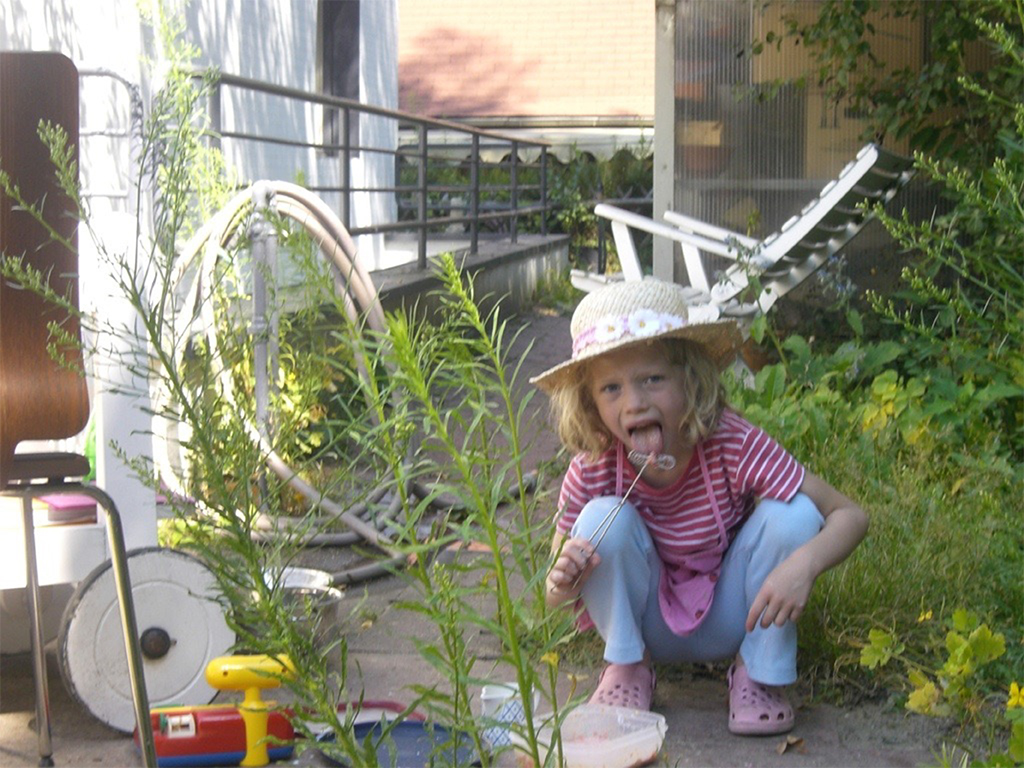
This essay is based on the book Mehr Matsch. Kinder brauchen Natur, Berlin 2010.
Translated into English, edited and amended by the author for Tangible Territory journal.
Czech edition Více Bláta: Děti potřebují přírodu was published by Malvern in 2015.
Images of Andreas’ children, Max and Emma, were kindly provided by the author. Many thanks to him and his children for the permission to feature them.
References:
[1] Huizinga, Johan (2009 [1958]): Homo ludens. Vom Ursprung der Kultur im Spiel. Hamburg: Rowohlt, p. 11. Translation by the author, AW.
[2] Paul Klee, quoted from Schuster, Peter-Klaus (2008): “Die Welt als Fragment. Bausteine für das Universum Klee.” In: Das Universum Klee. Catalog for the exhibition. Edited by Dieter Scholz and Christina Thomson. Ostfildern: Hatje Cantz Verlag, p. 15. Translation by the author, AW.
Andreas Weber is a Berlin based book and magazine writer and independent scholar. He has degrees in Marine Biology and Cultural Studies, having collaborated with theoretical biologist Francisco Varela in Paris. Andreas has contributed extensively to developing the concept of enlivenment in recent years, notably through his essay Enlivenment. Towards a fundamental shift in the concepts of nature, culture and politics (Berlin 2013, published in expanded and rewritten form as Enlivenment. Toward a Poetics for the Anthropocene, MIT Press, 2019). Andreas has put forth his ideas in several books and is contributing to major German magazines and journals, such as GEO, National Geographic, Die Zeit and Greenpeace Magazine. Weber teaches at Leuphana University and at the University of Fine Arts, Berlin. He is part of the staff of und.Institute for Art, Culture and Sustainability, Berlin, which is devoted to link the fields of art and culture with the field of sustainability, and to develop exemplary models of productive exchange. Andreas has been named as the 2016 Jonathan Rowe Commons Fellow, Mesa Refuge, Point Reyes, CA, USA. https://biologyofwonder.org/
